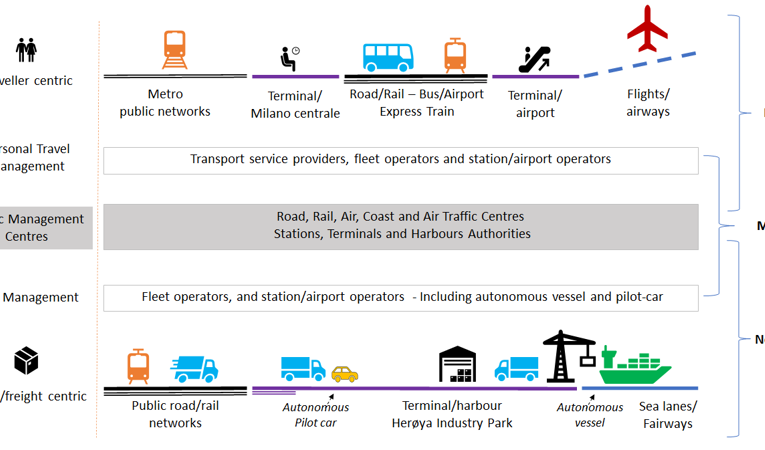- Forschungsprojekte : /de/anwendungsorientierte-forschung/institute/isis/forschungsprojekte/
- Ausstattung : /de/anwendungsorientierte-forschung/institute/isis/ausstattung/
- Team : /de/anwendungsorientierte-forschung/institute/isis/team/
- Agenda : /de/anwendungsorientierte-forschung/institute/isis/agenda/
- News : /de/anwendungsorientierte-forschung/institute/isis/news/
- Forschungsprojekte : /de/anwendungsorientierte-forschung/institute/isis/forschungsprojekte/
- Ausstattung : /de/anwendungsorientierte-forschung/institute/isis/ausstattung/
- Team : /de/anwendungsorientierte-forschung/institute/isis/team/
- Agenda : /de/anwendungsorientierte-forschung/institute/isis/agenda/
- News : /de/anwendungsorientierte-forschung/institute/isis/news/
H2020 - ORCHESTRA

In Kürze
1. Automatisierte und integrierte Mobilität
Horizon2020
8 pays, 16 partenaires
Vincent Robatel
Kompetenzinventar
Mai 2021 - Mai 2024
ORCHESTRA aims to orchestrate traffic management across all transport modes and in the presence of connected and automated vehicles.
Traffic management traditionally coordinates traffic flows within “their silo” (road network, railway network, a set of fairways, air corridors, etc.). The introduction of Connected Autonomous Vehicles, and new situations, as exemplified by the COVID-19 pandemic, stresses the conventional transport systems and questions if they are robust and resilient enough. In ORCHESTRA, a multimodal traffic management ecosystem will be designed to efficiently handle changes in requirements and procedures and assess whether laws, regulations, management, and organisational practices are designed for the optimal handling of normal operations and crises.
The long-term vision of ORCHESTRA is a future where it is easy to coordinate and synchronise traffic management of all modes (road, sea, air and rail), to cope with diverse demands and situations. ORCHESTRA will facilitate optimal transport networks and efficient multimodal transport services for people and goods, both in rural and urban areas. ORCHESTRA will bridge the current silos within traffic management.
Traffic management for sea, road, rail, and air transport should work together to support new multimodal transport services. It needs to facilitate better utilisation and more resilience in all situations – from daily operations to disasters.
ORCHESTRA will support key stakeholders, including practitioners, policymakers, public authorities, transport providers, and users, with tools and best practices to enhance collaboration and synchronising multimodal traffic management. The project will assess rules and regulations for data governance and sharing and efficient traffic management, supported by intelligent infrastructure and CAVs.
The project's solutions will be prototyped and evaluated in two Living Labs. This will provide concrete evidence on how technological capabilities and organisational practices can be integrated to optimise transport through selected use cases. Demonstrations include coordinating freight and passenger flows across modes in a dynamic, safe, secure, and sustainable manner. The use cases will be upscaled through simulations to evaluate complex multi-actor actor scenarios and manage irregularities (including disasters).
- Milan Malpensa airport will focus on efficient door-to-gate routing according to preferences (fastest, cheapest, etc.) to optimise traffic and passenger flow in Italy.
- In Norway Herøya Industrial Park, the pilot will focus on full automatization by facilitating and aligning traffic management measures.
ROSAS, one of the Centre of Competence of the HEIA-FR is playing an important role in the Orchestra project as it is leading one of the major work packages: "Living Labs, trials and simulation".